The Village Gardener: Tithonia rotundifolia or Mexican sunflower
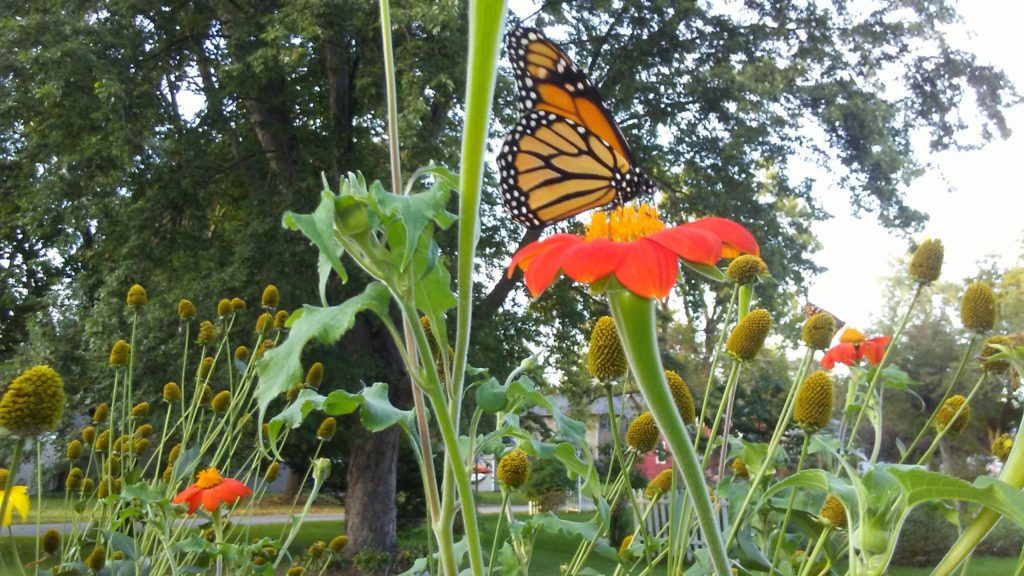
by Georgeanne Vyverberg –
It’s the final day of August with the heat index in the middle 90’s. My gardens are now in their third summer here, and are jungle like and abundant in both beauty and bounty. I say bounty since my vegetable garden here at the house and the community garden have so much food that it’s hard to keep up with it. So, I give some away and trade what I grew with other folks who grew what I did not. This is one of the many benefits of a community garden. I heartily recommend it. Also, seeing the thrill of someone who proudly posts pictures of their first tomato, or working with longtime gardeners where one can always learn a tip or two on some problem is worth the effort.
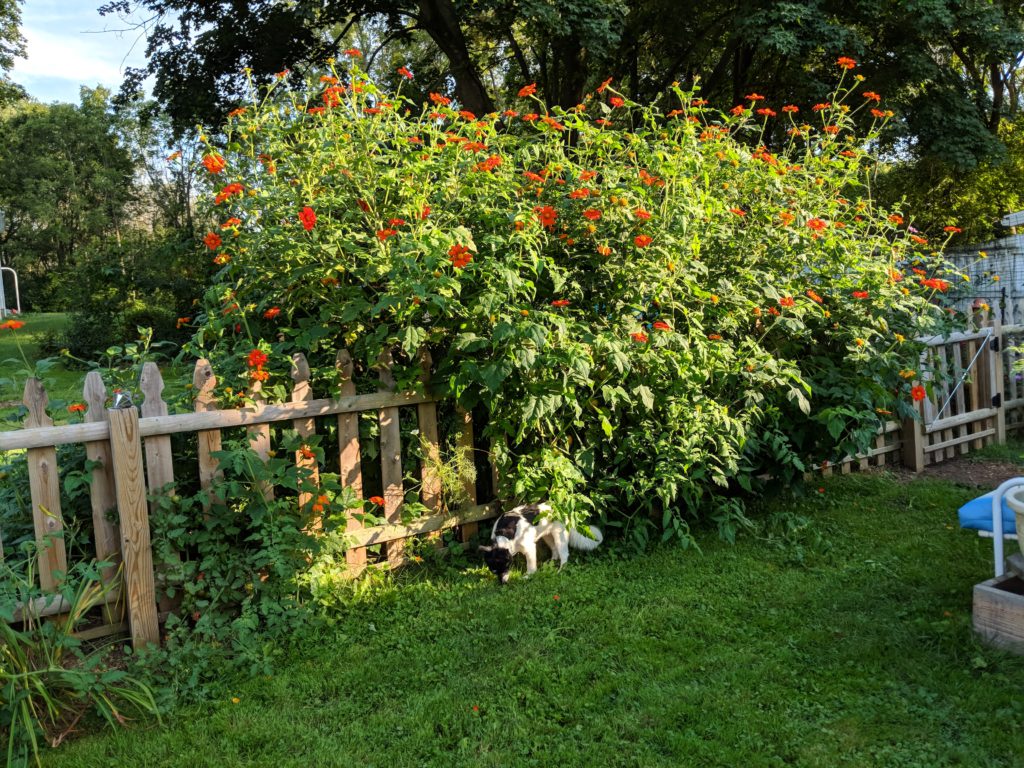
Sitting outside the other day and looking at the yard I began to realize that many plants are crowded and some arejust not right for the spot I chose for them. Next year’s garden is beginning to take shape in my brain already. I went inside and retrieved my garden journal and a glass of ice tea and began a list of things to do this Fall and next Spring. It is a pleasant task as I know I can do these things later since it’s too hot today and I don’t really want to destroy the wildness in the gardens which I really love. I’ve always been a fan of those Cottage gardens of Europe and although mine are more un-tidy than those, it’s something I can strive for next year or the year after.
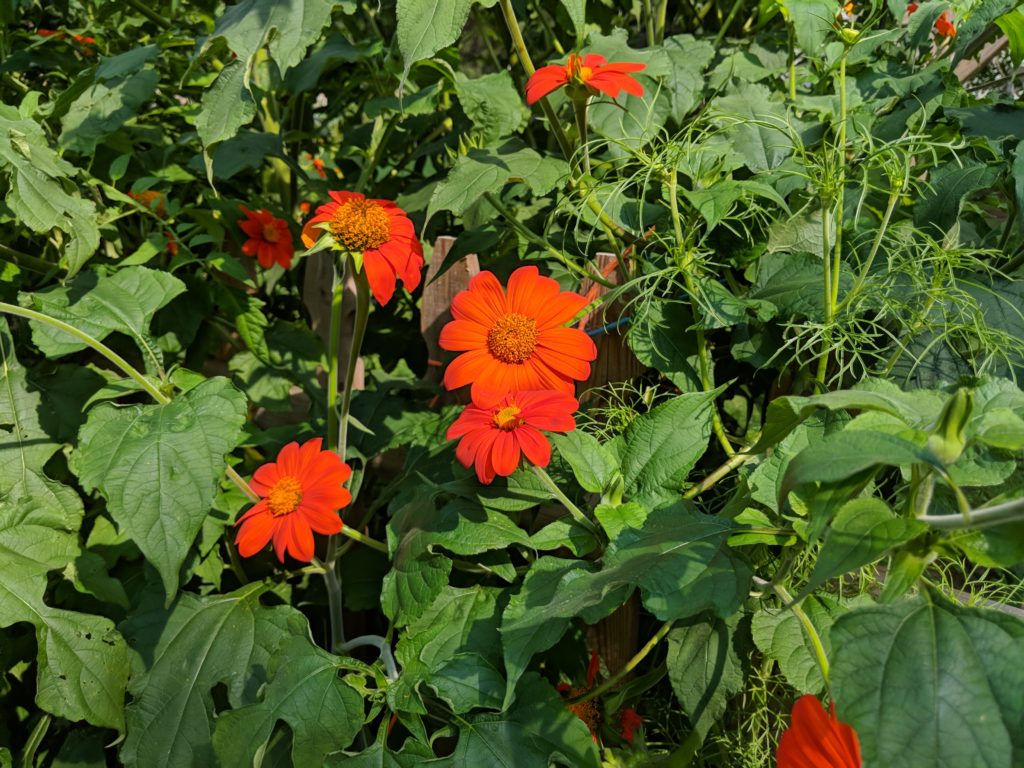
Photo by Georgeanne Vyverberg
Do you have a favorite flower you grew this year? I’d love to hear about it and I want to tell you about my favorite. I first grew Mexican sunflower or Tithonia rotundifolia many years ago in my farm gardens. I had so much space on my land that I tried lots of things I had never planted before. One year I grew a whole quarter acre garden of Zinnias for a friend’s daughter who wanted them for her wedding. But another year I wanted to just grow a small field of sunflowers so I ordered every different seed I could find. It was a great success because we had the perfect hot and sometimes droughty conditions that sunflowers love. Perfect too because at that time I did not have running water. And this garden was too far from my pond as well. They were extraordinary, but the Mexican sunflower stole the show. Eight feet tall and covered with bright orange or reddish dahlia like blossoms, which kept blooming until first frost. But the best thing were the butterflies. From the first bloom Monarch butterflies were constantly flitting about. There were others…Black and Yellow swallowtails, American Beauties, Red Admirals and so many kinds of bees. I found myself hanging out by those sunflowers for hours photographing and just being there.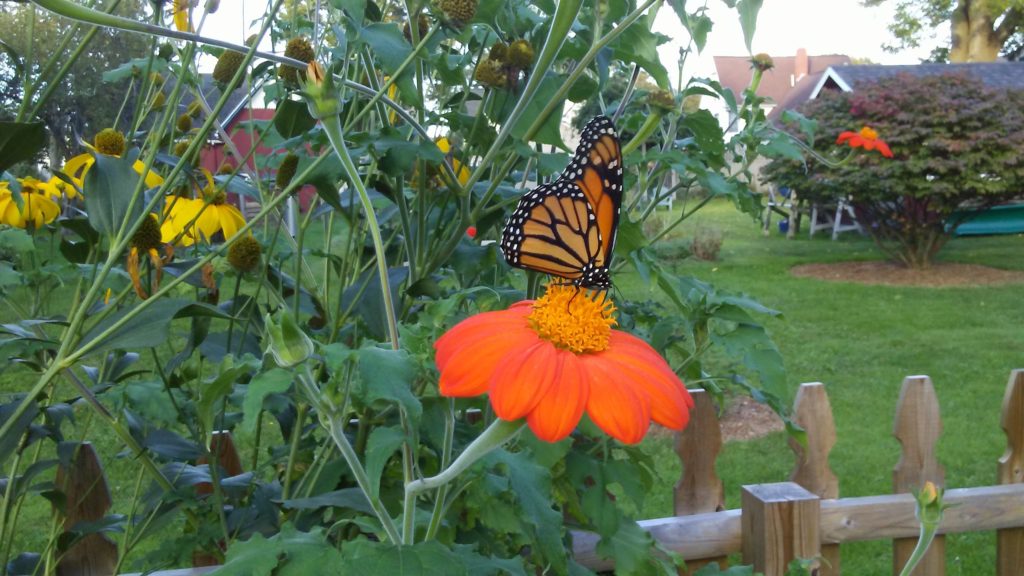
Last year and this I planted Tithonia. Many people say they are hard to grow but I found otherwise. I planted a row along my back fence and now 10 feet tall plants covered with flowers have formed a hedge. During a wind storm a couple of weeks ago a couple plants fell over and broke, but one fell into another garden and simply started sending up leaves and now flowers. They have wide 2-3-inch hollow stems and velvety leaves which the deer seem to avoid. This hedge of mine is directly along a path the deer like to use to wander through my little half acre. There are always clouds of Monarchs flitting about and I have seen the Giant Swallowtails as well. The Giant butterflies have been making a comeback after many years of absence in our area. Like the monarchs they have specific needs in order to breed and lay eggs. For monarchs it’s Milkweed and several varieties grow in our area. For the Giant Swallowtail there are only two plants on which they lay their eggs. One is a small plant called Garden Rue and the other is Prickly ash also known commonly as the toothache tree because its small fruits can numb the tongue and aid in a toothache. It is a small understory tree or shrub in the Citrus family, which only grows in limestone rich soils.
There is some scientific evidence that another close member of the Tithonia family called Tithonia diversifolia which is commonly known as the Marigold tree and sports yellow flowers, is able to increase nutrients and minerals in soils where they are planted. They have been used in Africa to improve soils by using them as a green manure or added as compost to them. Soils do not need expensive chemical fertilizers and yields have been shown to be greater than in plots that do use extra fertilizers. What could be better than that? Its an amazing plant. I am going to make sure the remains of my sunflowers are put in my compost heap.
The other best thing, well it’s difficult to choose the best…is that Hummingbirds LOVE Mexican sunflowers. There are several pairs that visit this hedge all day long, but especially in early evening and that’s where you will find me chilling with a glass of wine and watching the show.
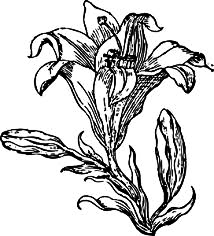 Georgeanne has been fascinated by plants ever since a neighbor gave her some flower seeds when she was very young. The magic of watching them sprout into beautiful flowers has become a lifetime of wonderment. She lives in Honeoye Falls with her canine and feline friends, a small flock of chickens and more recently a rabbit, or two.
Georgeanne has been fascinated by plants ever since a neighbor gave her some flower seeds when she was very young. The magic of watching them sprout into beautiful flowers has become a lifetime of wonderment. She lives in Honeoye Falls with her canine and feline friends, a small flock of chickens and more recently a rabbit, or two.